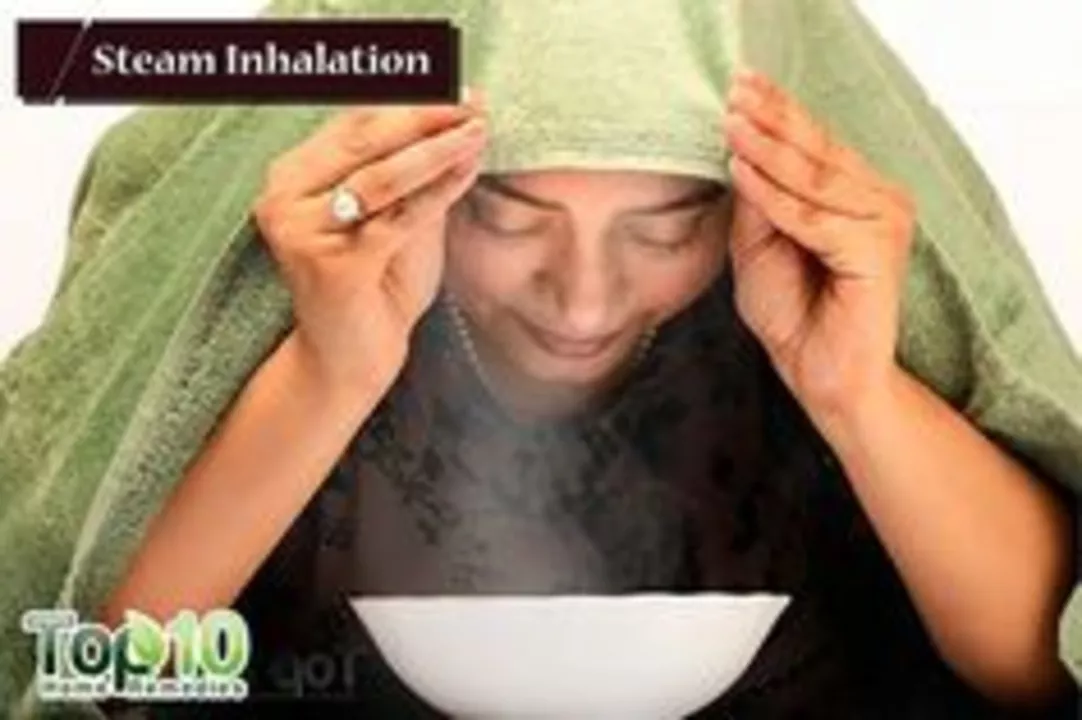Steam inhalation: how to use it safely and when it helps
Steam inhalation is an easy home trick people use to loosen mucus, ease sinus pressure, and feel less congested. It can give fast, short-term relief for a blocked nose or tight chest, but it won’t cure infections. Do it wisely to avoid burns and wasted effort.
Here’s a simple, safe method that works for most adults: boil water and pour it into a sturdy bowl, let it sit 30 seconds so it’s very hot but not boiling, drape a towel over your head, lean over the bowl keeping your face 8–12 inches away, and breathe the steam for 8–10 minutes. Take slow, steady breaths through your nose if you can; stop right away if you feel dizzy, too hot, or uncomfortable.
What to add and what to avoid
Plain hot water is often enough. Some people add a teaspoon of salt to mimic saline steam — that’s generally safe and can feel soothing. Essential oils like eucalyptus or menthol can give a cooling scent and a sense of clearer air, but they can irritate sensitive noses and airways. Never use oils on infants or very young children; their airways react differently and oils can trigger breathing problems.
Avoid adding medicinal drops, strong vapors, or anything flammable. Don’t put your face too close to boiling water or hold a baby over a bowl of steam. Steam from kettles or pots can cause serious scalds if spilled. Electric steam inhalers give controlled steam flow and reduce spill risk, but follow the device instructions and clean it between uses.
Who should skip steam inhalation or use extra caution
Do not use steam inhalation on infants and toddlers — use a cool-mist humidifier or sit with the child in a warm bathroom instead. People with asthma, COPD, cardiovascular conditions, or diabetes should check with a doctor first; steam can trigger wheezing or strain in some cases. Older adults and anyone with reduced heat sensitivity should be extra careful to prevent burns.
If symptoms include high fever, severe or persistent chest pain, bloody mucus, shortness of breath, or symptoms lasting more than a week, see a healthcare provider. Steam may ease symptoms but won’t replace medical care for bacterial infections or serious lung issues.
Alternatives that work well: saline nasal irrigation (neti pot or squeeze bottle) for direct nasal flushing, a cool-mist humidifier to keep air moist over hours, and warm showers to get temporary steam without spills. For lasting relief of sinus or allergy problems, talk to a pharmacist or doctor about medicated sprays or allergy treatment.
Use steam inhalation as a short-term comfort tool, not a cure. Keep sessions brief, protect skin from hot water, skip strong additives for kids, and choose safer options when needed.

How to Use Steam Inhalation for Chest Congestion Relief
As someone who suffers from chest congestion, I've found that steam inhalation is a great way to find relief. It's a simple process where you breathe in warm, moist air, which helps loosen mucus, making it easier to cough up. To do this, you can either use a steam inhaler, or simply fill a bowl with hot water and place a towel over your head to create a steam tent. Adding a few drops of eucalyptus oil can further enhance the benefits. Remember to inhale slowly and steadily for the best results.
Read More